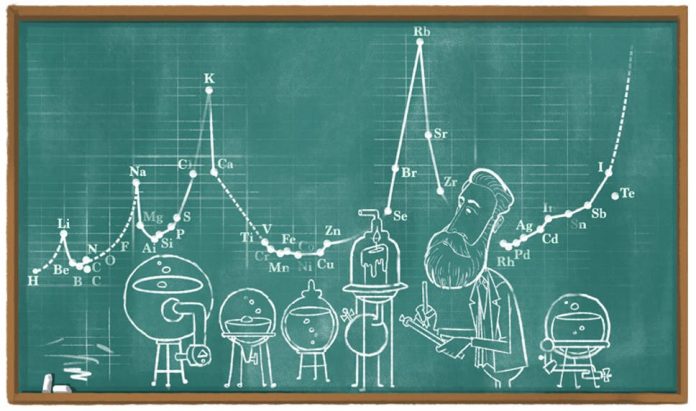Google is celebrating the 190th birthday of the chemist and writer Julius Lothar Meyer with a Doodle depicting him experimenting in the lab to a backdrop of his vertical display of elements.
Meyer was the son of a doctor from Varel in Germany. He qualified in medicine himself in 1854 after studying at Zurich and Würzburg and gained his PhD from the University of Breslau in 1858. At first his interests were physiological but he slowly moved into chemistry. He became professor of chemistry at Karlsruhe in 1868 where he stayed until he moved to the chair at Tübingen (1876–95).
Meyer is best remembered for his early work on the periodic table. He was much impressed by Stanislao Cannizzaro, expounding his work in his book Die modernen Theorien der Chemie (1864; Modern Chemical Theory). In writing his textbook it had occurred to him that the properties of an element seem to depend on its atomic weight. Meyer plotted the values of a certain physical property, atomic volume, against atomic weight. He found clear signs of periodicity, the graph consisting of a series of four sharp peaks. He noticed that elements with similar chemical properties occur at comparable points on the different peaks; e.g., the alkali metals all occur at the tops of the peaks.
Meyer did not publish his table until 1870 so he was preempted by Dmitri Mendeleev, who had published his periodic table in 1869. Meyer never disputed Mendeleev’s priority and later stated that he lacked sufficient courage to have gone on to predict the existence of undiscovered elements.





























